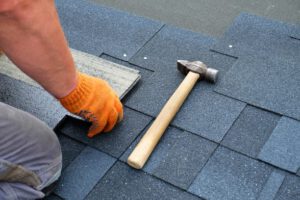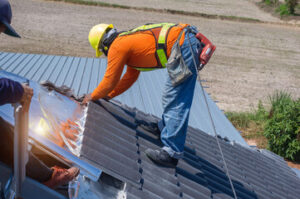With more than 1.7 million podcasts available, the selection can feel overwhelming. Thankfully, a wide range of Mental Health Podcasts help you overcome life’s challenges.
Comedy duo 2 Dope Queens recount their own experiences with depression with wit and wisdom. John Moe uses humor to discuss his clinical depression without stigmatizing those who suffer from it.
While a therapist may be the best option for those dealing with mental health issues, many people find that mental wellness podcasts can help them learn helpful tips and tools. These podcasts often feature stories from real people who are going through mental health challenges, and can provide listeners with a sense of community. Additionally, there are many different mental health podcasts aimed at people with specific mental health challenges, such as depression or grief.
In his New York Times Bestselling book 10% Happier, ABC news anchor Dan Harris discusses how an on-air panic attack prompted him to look for a way to defang the voice in his head and become less yanked around by emotions. He discovered meditation, which helped him overcome his anxiety and find more peace in his life. The Ten Percent Happier app is a tool designed to help people start or build their meditation practice.
The free version of the Ten Percent Happier app offers a starter meditation course and several short, guided meditation sessions. In addition, the premium version of the app offers a variety of meditation courses and meditation singles (stand-alone sessions). Additionally, the Ten Percent Happier app has a unique feature that allows users to track their progress through a profile hub. This shows a user’s daily progress, meditation history, and their favorite/saved meditations. It also allows them to set goals for themselves and provides nudges when they haven’t meditated in a while. This personalization helps the Ten Percent Happier app earn 4 out of 5 stars for its “personalization” category in our scoring criteria.
Other popular meditation apps include Headspace and Insight Time. Both have similar features to Ten Percent Happier, but Headspace scores slightly higher in our rating score. Both apps offer great mindfulness and meditation courses for beginners, and are designed to help individuals develop a regular meditation habit. Both of these apps have a large selection of short, guided meditations, as well as longer mindfulness and sleep meditations.
There are also a number of other mental wellness podcasts that address specific topics and themes, such as grief, parenting, or anxiety. Some of these podcasts are specifically geared towards women, LGBTQIA+ communities, or young adults. For example, the podcast Attitudes with Erin Gibson and Bryan Safi explores the social stigmas surrounding LGBTQIA+ issues, while Feeling Good with Matthew Hepburn is a podcast that explores helpful techniques to reduce anxiety and boost happiness.
Another popular mental health podcast is Here’s Something Good, which shares positive news and stories. This is a welcome relief from the constant flow of negative news and can help listeners to maintain their resilience.
If you are interested in trying a mental health podcast, but still need some help navigating the world of self-care, consider seeking support through online therapy. You can find licensed therapists who specialize in your particular needs through a service like Talkspace. These services allow you to connect with a therapist via videoconferencing, phone, or chat and can help you get back on the road to a healthy mind.
Mental
With millions of podcasts available to listeners, there’s something for everyone. Whether you’re searching for stress-busting techniques, mindfulness practices, or coping strategies, mental health podcasts offer an accessible way to get this information while on the go. These podcasts can also foster community and open conversations, help reduce stigma around mental illness, and encourage people to seek professional help if they need it.
Many of these podcasts tackle mental health topics from a variety of perspectives, highlighting the diversity of experiences and the range of symptoms. Some, like “The Courageous Life” hosted by Joshua Johnson, use real-life stories and scientific research to reframe mental health as an opportunity for resilience and strength. Others, such as “The Mental Illness Happy Hour” hosted by empathetic comedian Paul Gilmartin, bring a candid and compassionate approach to difficult topics by inviting guests who have faced depression or other mental health challenges.
Podcasts like “Therapy for Black Girls” hosted by Joy Harden Bradford are especially helpful to the minority community by providing resources specific to women of color seeking therapy. The podcast is recommended by licensed psychotherapist Jacquelin Darby, who appreciates how the episodes discuss mental wellness from a cultural perspective and how it relates to the socio-political environment.
For those who are unsure of where to start, the iTunes charts are full of mental health podcasts with positive reviews. Choosing a podcast that is curated by other listeners can provide you with the confidence that you are listening to content that has been reviewed and tested.
When considering a podcast, listeners should also consider how frequently it is updated. Some podcasts are updated on a daily, weekly, monthly, or ad-hoc basis, which may be important if they cover sensitive subjects such as eating disorders, PTSD, self-harm, or suicide. Additionally, listeners should pay attention to the format and tone of a show, as some podcasts are more conversational than others.
If you’re ready to take the next step in your journey, Choosing Therapy has partnered with leaders in mental health and wellness to help you find the right therapist for you. Our therapist directory lets you search by specialty, experience, insurance or price to find a therapist near you who is the best fit for your needs. Start your search today! Choosing Therapy is compensated by the companies included on this list. We only recommend products and services we believe in. You can read our privacy policy here.


 Zinc gutters are becoming increasingly popular as a choice for gutter repair. They are durable and cost-effective. Whether you’re building a new home or replacing an old one, these gutters will help to protect your investment.
Zinc gutters are becoming increasingly popular as a choice for gutter repair. They are durable and cost-effective. Whether you’re building a new home or replacing an old one, these gutters will help to protect your investment.